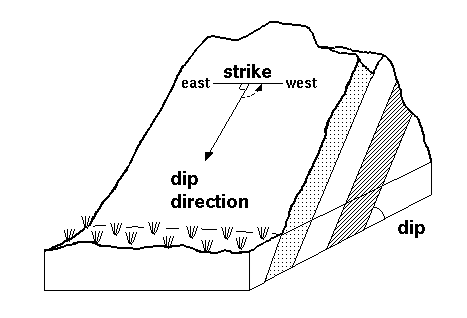How to plot the strike data to the Rosette diagram
Revision as of 10:40, 30 June 2015 by Adilia Okita Permatasari (talk | contribs) (Created page with "=Definition= The orientation of a rock bed, fault, fracture, cuestas, igneous dikes, and sills can be described using strike and dip of the rock. Strike is direction of the li...")
Definition
The orientation of a rock bed, fault, fracture, cuestas, igneous dikes, and sills can be described using strike and dip of the rock. Strike is direction of the line formed by the intersection of a fault, bed, or other planar feature and a horizontal plane. Strike indicates the attitude or position of linear structural features such as faults, beds, joints, and folds. Dip is the angle at which a planar feature is inclined to the horizontal plane; it is measured in a vertical plane perpendicular to the strike of the feature.[1]

Figure 1. Strike, dip, and dip direction[2]